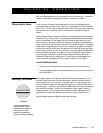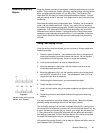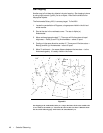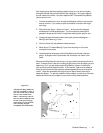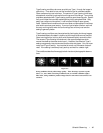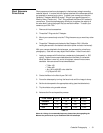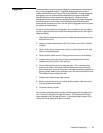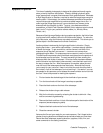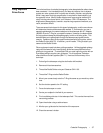
50 • Celestial Photography
CELESTIAL PHOTOGRAPHY
After looking at the night sky for awhile you may want to try photographing it.
Several forms of celestial photography are possible with your Celestron CM-
1100 telescope. The most common forms of celestial photography, in order of
difficulty are; short exposure prime focus, piggyback, eyepiece projection, and
long exposure deep-sky. Each of these is discussed in moderate detail with
enough information to get you started. Topics include the accessories required
and some simple techniques. More information is available in some of the
publications listed at the end of this manual.
In addition to the specific accessories required for each type of celestial
photography, there is the need for a camera — but not just any camera. The
camera does not need many of the features offered on today’s state-of-the-art
equipment. For example, you don’t need auto focus capability or mirror lock-
up. Here are the mandatory features a camera needs for celestial photogra-
phy. First, a ‘B’ setting which allows for time exposures. This excludes point
and shoot cameras and limits the selection to SLR cameras, the most com-
mon type of 35mm camera on the market today.
Second, the ‘B’ or manual setting should not run off the battery. Many new
electronic cameras use the battery to keep the shutter open during time
exposures. Once the batteries are drained, usually after a few minutes, the
shutter closes, whether you were finished with the exposure or not. Look for a
camera that has a manual shutter when operating in the time exposure mode.
Olympus, Nikon, Minolta, Pentax and others have made such camera bodies.
The camera should have interchangeable lenses so you can attach it to the
telescope and so you can use a variety of lenses for piggyback photography. If
you can’t find a new camera, you can purchase a used camera body that is
not 100-percent functional. The light meter does not have to be operational
since you will be determining the exposure length manually.
A cable release is needed with a locking function to hold the shutter open while
you do other things. Mechanical and air releases are available.
Is unguided astrophotography possible? Yes and no. For solar (filtered), lunar,
and piggyback (up to 200mm telephotos), the answer is yes. However, even
with PEC, off-axis guiding is still mandatory for long exposure, deep-sky
astrophotography. The Reducer/Corrector lens reduces exposure times
making the task of guiding a little easier.




